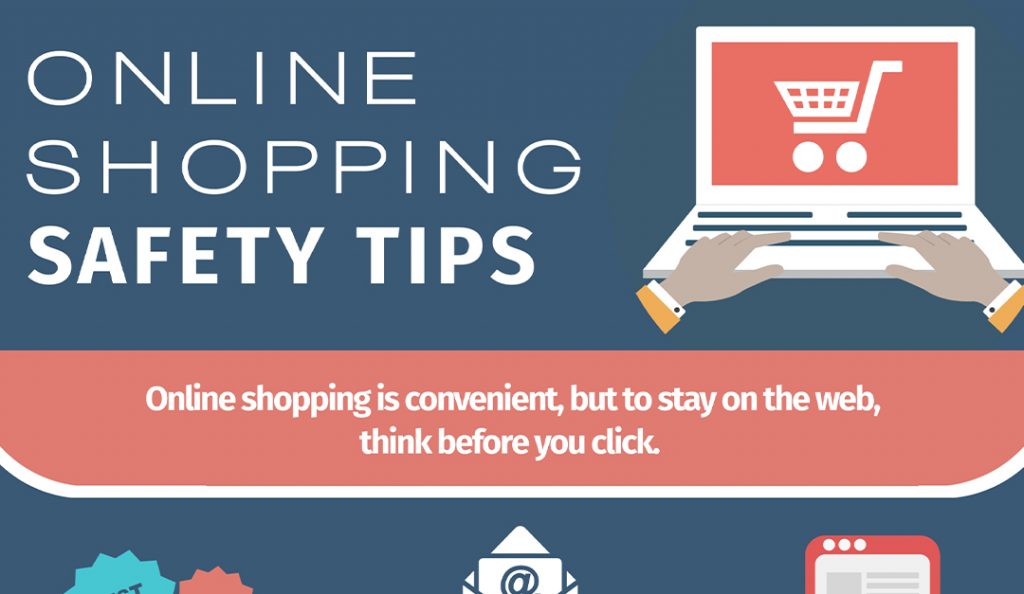“The Ultimate Guide to Shopping Safely on the Internet” – The Ultimate Guide to Shopping Safely on the Internet welcomes you to an essential journey through the ever-evolving landscape of online shopping. As we delve into this topic, we will uncover vital insights that ensure your online purchases are not only convenient but also secure. With the rise of e-commerce, understanding how to navigate the digital marketplace safely has never been more important.
From recognizing trustworthy websites to safeguarding your personal information, this guide will equip you with the knowledge you need to make informed decisions while shopping online. Join us as we explore tips that empower you to enjoy a seamless shopping experience without compromising your security.
In the fast-paced world we live in today, understanding the complexities of digital communication is increasingly essential. The way we interact with one another has dramatically changed due to the advent of technology, particularly the internet and mobile devices. This article aims to explore how digital communication has evolved, the impact it has on our personal and professional lives, and the skills necessary to navigate this landscape effectively.To kick things off, let’s take a moment to reflect on what digital communication actually entails.
At its core, digital communication refers to any form of communication that occurs through digital devices. This includes emails, social media interactions, instant messaging, video calls, and more. Unlike traditional face-to-face communication, digital communication often lacks non-verbal cues such as body language and facial expressions, making it both a challenge and an opportunity for effective engagement.The history of digital communication can be traced back to the early days of the internet in the 1990s.
Initially, communication was limited to emails and simple text-based message boards. However, as technology advanced, so did the methods of communication. The introduction of social media platforms in the 2000s revolutionized how people connected with each other, breaking down geographical barriers and allowing instant communication across the globe. This evolution has led to the creation of a virtual community where people can share their thoughts, experiences, and ideas in real time.One of the most significant impacts of digital communication is its role in shaping personal relationships.
For instance, social media platforms like Facebook, Instagram, and Twitter enable users to maintain relationships with friends and family members, even if they are miles apart. However, this immediacy and accessibility can also lead to misunderstandings and conflicts. The absence of physical presence can make it easy for messages to be misinterpreted. As a result, it’s essential to develop strong digital communication skills to convey messages clearly and effectively.In the professional realm, digital communication is equally transformative.
Businesses have increasingly turned to digital platforms for collaboration and communication, especially in the wake of remote work trends accelerated by the COVID-19 pandemic. Tools such as Slack, Microsoft Teams, and Zoom have become staples in the workplace, allowing team members to collaborate seamlessly, regardless of their physical location. This shift has led to increased flexibility and efficiency but has also blurred the lines between work and personal life.
To navigate these challenges, individuals must hone specific communication skills. Firstly, being concise yet informative is crucial. Given the fast-paced nature of digital communication, people often skim through messages. Hence, it’s essential to get straight to the point while providing enough context to avoid confusion. Secondly, practicing empathy and emotional intelligence in digital interactions can foster stronger relationships.
Understanding the emotions behind a message, even if conveyed through text, can lead to more meaningful connections. Moreover, the use of digital etiquette—sometimes referred to as “netiquette”—is vital. This encompasses the unwritten rules governing online behavior, such as being respectful, considering the tone of your messages, and being mindful of the platform you’re using. For instance, what may be appropriate to say in a casual text message could be deemed unprofessional in a work email.
Adapting your communication style according to the situation is a key skill in today’s digital landscape.As we dive deeper into the world of digital communication, it’s important to acknowledge the potential pitfalls. One major concern is the phenomenon of information overload. With a constant influx of messages, notifications, and updates, it can be overwhelming to manage communication effectively. This overload can lead to decreased productivity and increased stress.
Finding a balance and setting boundaries regarding when and how to communicate is crucial for maintaining mental well-being.Additionally, the rise of misinformation and digital manipulation poses a significant challenge for digital communication. The ease with which information can be shared online has led to the rapid spread of false information. Users must develop critical thinking skills to discern credible sources from unreliable ones.
This is particularly important in professional contexts, where sharing accurate information can greatly impact decision-making and outcomes.Another aspect to consider is the increasing reliance on visual communication. Platforms like Instagram, TikTok, and YouTube have popularized visual storytelling, leading to a shift in how messages are conveyed. While visuals can enhance engagement and understanding, they also require users to adapt their communication strategies.

Learning how to create compelling visual content and understanding the significance of visual cues can set individuals apart in a crowded digital space.In conclusion, digital communication has become an integral part of our lives, influencing both personal and professional interactions. As technology continues to evolve, so too will the methods and norms surrounding communication. By developing strong digital communication skills, practicing empathy, and being mindful of digital etiquette, individuals can navigate this landscape with confidence.
As we continue to explore the digital realm, it’s essential to stay adaptable and open to learning. The ability to communicate effectively in a digital world opens doors to new opportunities, strengthens relationships, and enhances our overall quality of life. Embracing these changes and developing the necessary skills will not only make us better communicators but also more connected individuals in an increasingly digital society.



